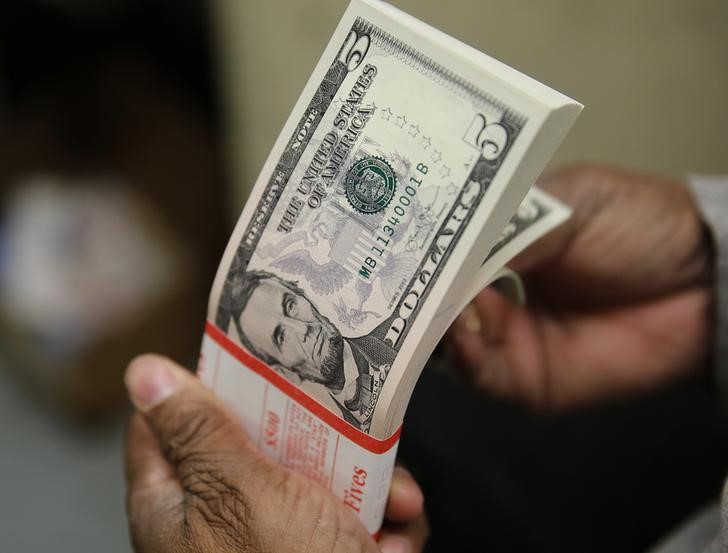Investing.com – The U.S. dollar edged lower in early European trade Wednesday, as improved risk sentiment weighed on the safe haven despite fresh signs of Chinese economic weakness.
At 03:10 ET (07:10 GMT), the , which tracks the greenback against a basket of six other currencies, traded 0.2% lower at 102.177, paring some of its 0.5% rise from the previous session.
Dollar slips even after weak Chinese inflation
The dollar was in demand on Tuesday as global weakness in equities, largely on concerns over the banking sector, hit risk sentiment.
Equities have largely bounced Wednesday, resulting in the safe-haven dollar retreating. However, losses are small as the latest data out of China pointed to the Asian giant slipping into deflation, indicating that its recovery from the COVID hit is struggling to continue.
fell 0.1% to 7.2069, amid reports of dollar selling by state-owned Chinese banks, helping the yuan rally off a one-month low even after the weak inflation data.
Fed officials suggest the central bank can pause
Also causing the dollar to backpedal were dovish signals from Fed officials overnight, with Philadelphia Fed President suggesting are high enough already, echoing the view of Atlanta Fed President .
Fed Chair Jerome Powell made it clear that the central bank was looking closely at upcoming economic data for guidance ahead of September’s Fed meeting.
Thursday sees the release of the latest numbers, which are expected to show that U.S. inflation grew slightly in July from the prior month.
Yen exposed despite gains
Elsewhere, rose 0.2% to 1.0979, while gained 0.2% to 1.2772.
fell 0.2% to 143.12, with the yen gaining after dropping sharply in the past two sessions, amid growing uncertainty over the Bank of Japan’s plans for monetary policy.
“With the Bank of Japan normalisation still looking too remote to temper bearish pressure on the yen, USD/JPY is the most exposed G10 pair to the ongoing bond market instability, especially given some signs of resilience in US equities, which limited losses in high-beta currencies,” said analysts at ING, in a note.
Read the full article here




